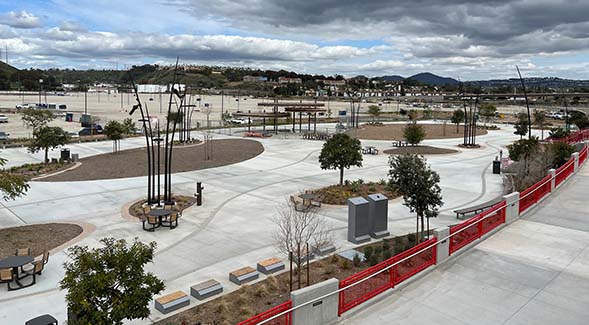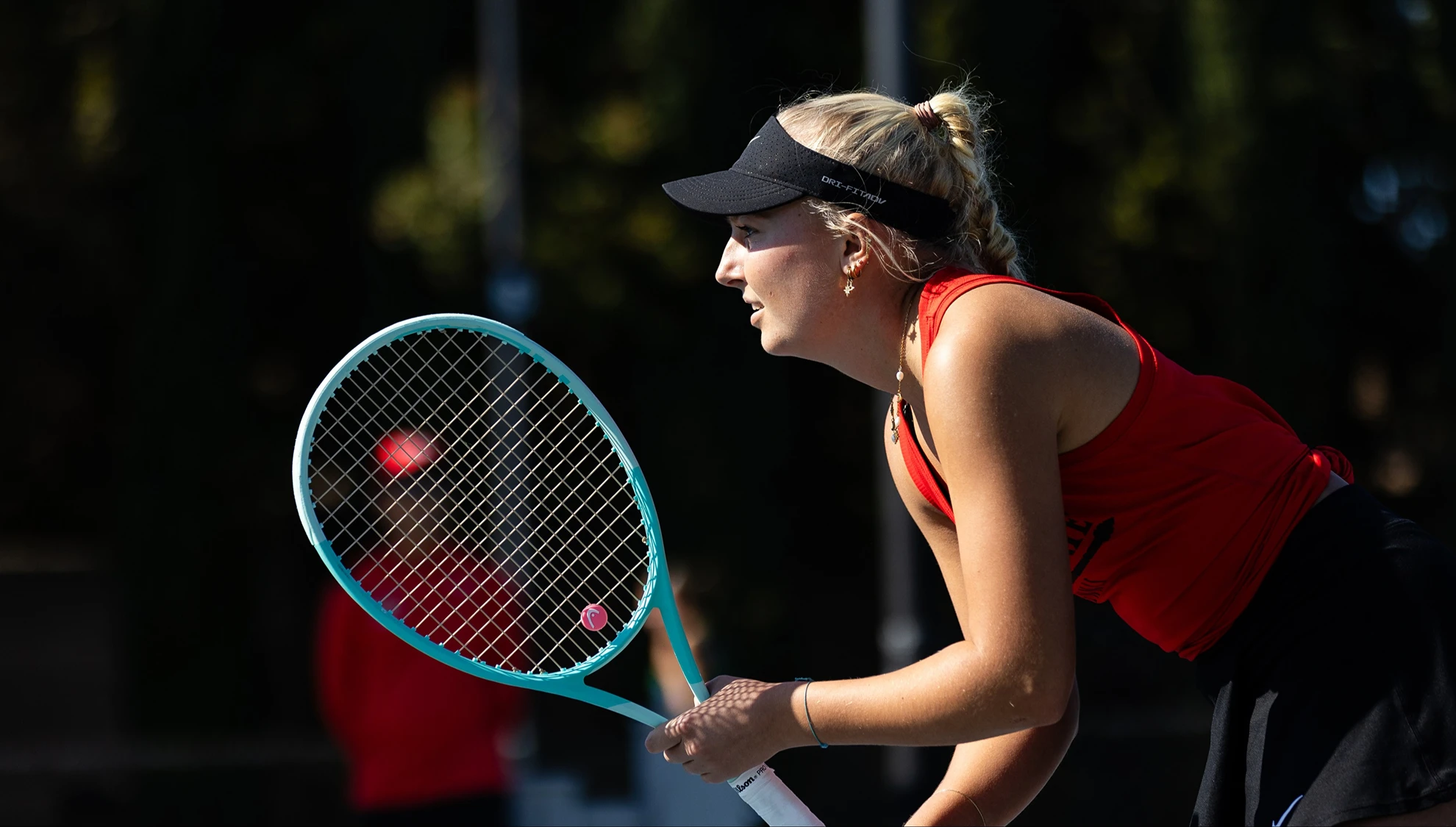From Parking Lot to River Park
The 34-acre river park at SDSU Mission Valley, to be completed near the end of 2023, will provide San Diegans with a new outdoor locale to exercise, play, picnic, or just enjoy connecting with nature.

Before SDSU Mission Valley, the space between the city’s former stadium and the San Diego River was rarely looked upon as an environmental plus. After heavy rain, it was common for motor oil, bacteria and chemicals to flow into the fragile river ecosystem, which empties into the ocean near the entrance to Mission Bay.
Now, more than 14 months after breaking ground, the 34-acre river park along the southern stretch of SDSU Mission Valley is starting to take shape.
With recreational features including active playfields, a children’s playground, basketball courts, and native landscaping and features inspired by the land’s Kumeyaay heritage, the river park will become a transformational space that also protects and respects the river watershed.
“The goal of the river park is to act as a ‘green sponge’ to naturally absorb and filter runoff while creating recreational opportunities and rebuilding the native ecosystem,” said Glen Schmidt, founding partner of Schmidt Design Group, and the landscape architect for the river park.
The nature-based solution collects and treats runoff by directing drainage into new retention basins that cleanse the water before slowly releasing it into the river. In the above-normal rains of the past winter, the design has already demonstrated its value as a significant improvement over former conditions, especially further downstream.
“Overall, the goal has been to create a park that supports the community,” said Gina Jacobs, associate vice president, Mission Valley Development.
“By listening to the community and advocacy groups that provided input into the park design process and making sustainable development a priority, we are carving out a legacy not just for San Diego State University, but for the greater community and its future generations.”
Rebuilding the ecosystem
The river park design is sensitive to its location adjacent to the habitat corridors along the river, as well as the adjacent Murphy Canyon Creek. Plantings of exclusively San Diego County native species have been placed between these natural areas and active recreation as a buffer.
Plant species throughout the park are predominantly California native species including Coast Live Oaks, California Sycamores and Torrey Pines. Schmidt notes these reinforce biodiversity by attracting native insects and wildlife that depend on them.
Schmidt Design Group designed the park to make use of the elevated San Diego trolley tracks, situating several gathering spaces in the “ribbon of shade” they cast. These include picnic tables, basketball courts, fitness equipment, ping pong and other games, and a children’s playground with a web tree at nearly eye level with the trolley. The site will also include multi-use recreation fields, suitable for soccer, rugby, flag football, and a variety of youth and intramural sports.
Winding through and encircling the park is a two-mile Hike and Bike Loop, part of a six-mile network of pedestrian and bicycle pathways in the park and SDSU’s greater research, commercial and residential development.
A portion of the loop will also serve as part of the regional river trail system, which begins at the river’s headwaters near Julian. Longtime SDSU philanthropists Ben and Nikki Clay have supported the development, operations and maintenance of the river park with a $750,000 gift last year. Ben Clay serves on the board of the State of California’s San Diego River Conservancy.
And, a $500,000 gift to San Diego State University establishes The Alta and Franklin Grant Family Mission Valley River Park Fund to help develop, operate and maintain the river park at SDSU Mission Valley with recognition at one of the several picnic nodes and the children's play area in the eastern portion of the park.
Interpretive signs will inform park visitors of the rich origins and history of Mission Valley, the river watershed, and the various plants and animals that live in this diverse habitat. Artful mileage medallion markers are located every quarter mile along the trail depicting plants vital to the Kumeyaay people.
At night, these walkways will be illuminated by solar-powered fixtures, a sustainable design alternative to miles of copper wiring that reduces electrical demand throughout the site. The low-impact, shielded lighting will minimize the effect of light pollution on the nearby riparian habitat and the animals that forage and hunt there.
Landmarks
Exploration is a key design element of the river park and there will be several new landmarks to discover.
The plaza in front of the trolley’s Stadium station has been modified to include a grand staircase and accessibility ramp. A less than ten-minute trolley ride to and from SDSU and a 24-minute ride to and from downtown, the plaza will be an accessible site for celebrations and community gatherings. The plaza’s paving patterns take inspiration from the vegetated islands and fluidity of the San Diego River.
The central focal point of the trolley plaza is the Mike and Christine Pack Reflection Pergola, which draws inspiration from the river and ewaa (dome-shaped shelters) used by the early Kumeyaay. These shelters were built from branches and covered with leaves from willow, tule or other plants.
Below it, the accent paving is made of part of the 200,000 tons of concrete salvaged from the demolition of the former stadium, of which 90% was diverted from the landfill and recycled for reuse on site.
Another primary feature of the river park draws inspiration from a concept introduced by Frederick Law Olmsted and Calvert Vaux in their design for New York’s Central Park of the 1850’s, where ornate bridges separated pedestrians and moving carriages.
For the river park, Schmidt Design Group reconfigured the southeast entry road that enters into SDSU Mission Valley from Rancho Mission Road. Here, a bridge-like underpass has been introduced to separate vehicular traffic from pedestrians and bicyclists who are enjoying the river park below.
Construction of the river park is expected to be complete before the end of the year, with a grand opening to be scheduled.
For more information about SDSU Mission Valley, visit the SDSU Mission Valley website or follow on Instagram, Facebook, and Twitter where regular updates on the park construction progress are provided.



